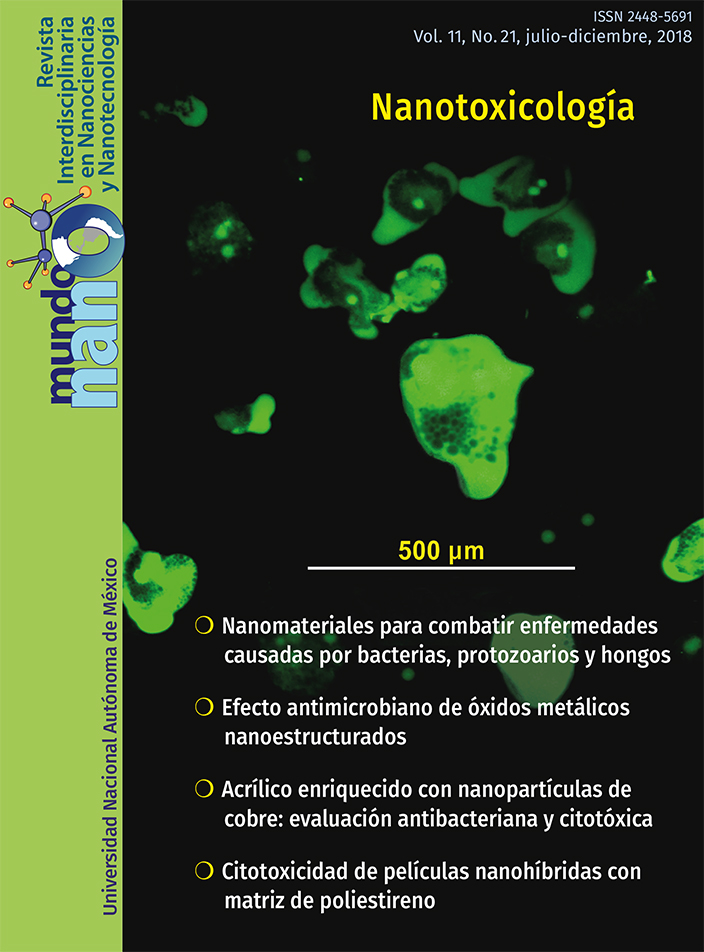NanoZebra: De la edad de piedra a la edad nano y como un pez puede ayudarnos a navegar por ella.
Contenido principal del artículo
Resumen
A lo largo de la historia de la humanidad el descubrimiento y uso de materiales ha sido un motor para el avance de las sociedades que han logrado aprovecharlos. Sin embargo también han representado riesgos emergentes para la salud y la degradación del medio ambiente debido a las propiedades de los materiales. En el presente artículo se hace un breve recuento de esta historia desde la edad de piedra hasta nuestros días, así como de el valor que han tenido el uso de diferentes modelos de organismos y en particular el pez cebra en la evaluación de la toxicidad como uno de los aspectos fundamentales de estudio de los efectos de los nanomateriales.
Descargas
Detalles del artículo

Mundo Nano. Revista Interdisciplinaria en Nanociencias y Nanotecnología, editada por la Universidad Nacional Autónoma de México, se distribuye bajo una Licencia Creative Commons Atribución-NoComercial 4.0 Internacional.
Basada en una obra en http://www.mundonano.unam.mx.





